Master the art of container herb gardening with these Essential Container Herb Garden Tips for Growing Herbs In Pots.
Don’t know how to grow herbs in pots? Reap the benefits of container herb gardening with our guide. Learn how to successfully grow a thriving herb garden in pots, from choosing the right containers and soil to providing adequate sunlight and water.
Essential Container Herb Garden Tips: Growing Herbs In Pots
1. Selecting Containers
When growing herbs in pots, selecting the appropriate herb garden container is essential for the health and vitality of your plants. While most herbs thrive in shallow pots, certain plants like dill, cilantro, and lavender require larger 5-gallon volume containers.
Pay close attention to the containers’ drainage capabilities and always check for drainage holes to prevent waterlogging.
To ensure optimal growth, choose pots that are at least 8 inches deep, providing enough space for robust root development. Lightweight materials like clay or plastic pots are recommended as they retain moisture effectively and are easy to move.
Always choose the best herb garden pots keeping the following points in mind.
- Choose well-draining pots that match the size of your herbs, suitable for indoor or deck use.
- Most herbs prefer shallow pots: Dill, Cilantro, Lemongrass, and Lavender need larger 3-5 gallon containers.
- Check for drainage holes to prevent waterlogging and avoid root rot.
Can you grow different herbs in the same pot? Yes, if you go for large herb pots, you can plant as many as you like but make sure that each one gets the proper nourishment it needs to thrive.
2. Choosing the Best Location
While most of the herbs can be grown in a partially shaded spot, the amount of direct sunlight is very vital for their growth. One of the most important container herb garden tips, try to find a location that receives at least 4-6 hours of sunlight daily.
A balcony, patio, or windowsill with southern or western exposure is ideal. If you are growing herbs in pots inside, you can also go for an indoor herb garden with grow light.
Growing Herbs Indoors? Here are 46 Best Indoor Herb Garden Tips To Know Today
3. Avoid Using Regular Soil
Good potting soil is crucial for growing herbs in pots or containers. Avoid using 100 percent garden soil as it’s compact, has poor drainage, and is heavy in nature. Use a well-draining potting mix specifically formulated for container gardening or follow this recipe if you’re using garden soil:
- 2 parts garden soil
- 2 parts compost or well-rotted manure
- 2 parts perlite or coarse sand
- 1 part peat moss or coco coir
- Optional – A small amount of organic fertilizer (slow-release granules are ideal)
Instructions:
- Before starting, ensure your garden soil is free of rocks, roots, and large debris. If the soil is clay or sandy, you may need to adjust the ratio.
- In a large container or wheelbarrow, mix the garden soil, compost (or well-rotted manure), perlite (or coarse sand), and peat moss (or coco coir). Use your hands or a trowel to mix everything together until it’s thoroughly combined.
- Add a small amount of slow-release granular organic fertilizer to the mix. Make sure to follow the instructions on the package for the appropriate amount.
- Once everything is combined, your soil is ready to use. Fill your containers up to an inch below the rim to allow space for watering.
- After planting your herbs, water thoroughly to ensure the soil is moist but not waterlogged.
Remember always to keep an eye on your container garden. If the soil seems to compact over time, you might need to add more perlite or sand. If it dries out quickly, add more peat moss or coco coir. The goal is to maintain a balance that provides good drainage, sufficient aeration, and enough nutrients for your herbs to thrive.
4. Seeds Or Seedlings?
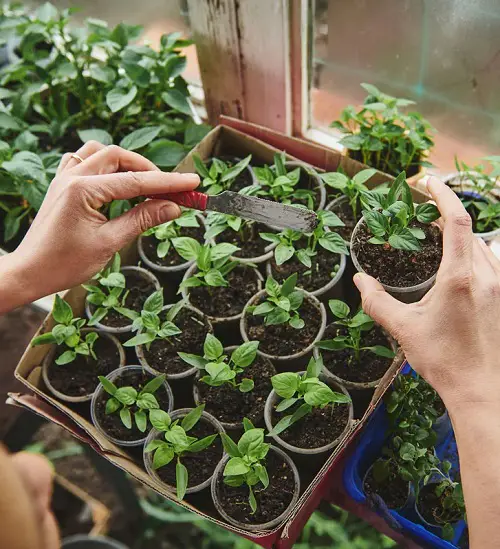
You should know which herbs to grow as seeds and the ones to grow from seedlings. Certain herbs, such as Parsley, Oregano, and Basil, have a longer germination period, making it beneficial to start with seedlings rather than growing them from seeds.
This is especially helpful for growing herbs in pots for beginners or those gardening in limited spaces.
However, it’s important to note that herbs like Cilantro, Dill, and Fennel do not transplant well. These herbs prefer to be directly sown when growing herbs in pots, as they may experience transplant shock if moved.
5. Regular Watering
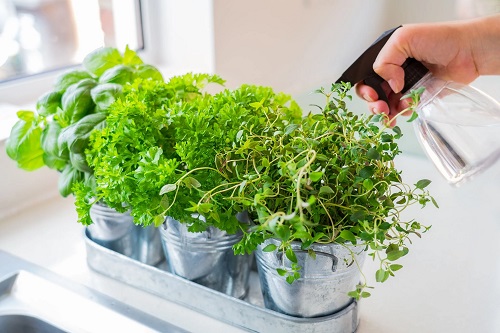
Proper watering is crucial for the health and growth of container herbs. Overwatering or underwatering can both harm your plants. Check the moisture level of the soil by inserting your finger about an inch into the soil. If it feels dry at that depth, it’s time to water your herbs.
Don’t know proper watering for herbs that grow in pots? When it comes to watering, consider the specific needs of different herbs. Some herbs, such as Mint, Parsley, Celery, Cilantro, Lemongrass, and Chervil, prefer moist soil.
For herbs like Basil, Chives, and Dill, a moderate level of soil moisture is ideal. On the other hand, herbs like Rosemary, Lavender, Thyme, and Oregano prefer drier soil.
6. Fertilizing the Right Way
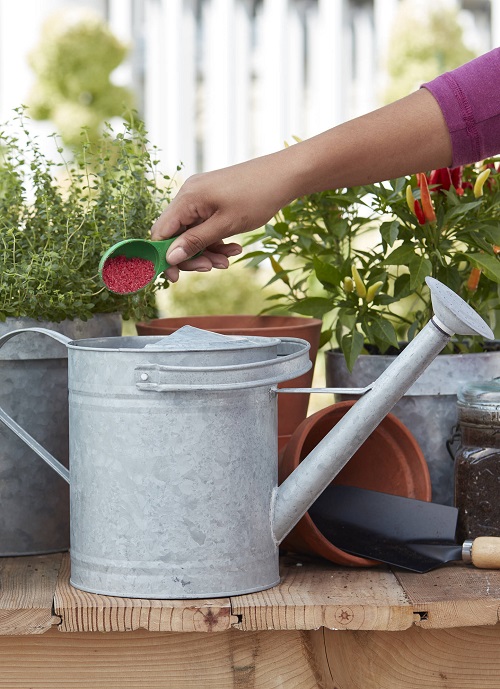
Container herbs benefit from regular feeding to ensure they receive the necessary nutrients for healthy growth. When growing herbs in pots, use a balanced, water-soluble fertilizer specifically designed for container plants. Always dilute to the feed to 1/2 of the recommended strength.
Alternatively, you can also go for a time-based balanced fertilizer when planting herbs in pots or choose an organic way, like mixing compost or well-rotted manure into the potting soil at the time of planting.
Never over-fertilize herbs, as this reduces the essential oil content in them, especially when growing herbs in containers. This regular fertilization will provide the essential nutrients your herbs need to flourish and produce robust foliage and flavorful leaves.
7. Pinching and Deadheading
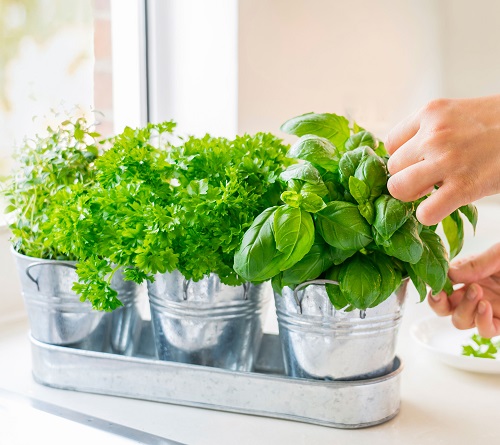
Pinching and pruning encourage lush and bushy growth and save you from having leggy and lanky plants when growing herbs in pots. Use your fingers or small scissors to cut cleanly from the terminal (top) portion of the stem, just above the baby lateral (side) shoots every few days when your plant is young and you’ve not started to harvest from it.
On the other hand, deadheading flowers from herbs is essential to increase the harvesting period. Flowering also reduces the foliage growth and essential oil content in leaves. Keep an eye on terminal shoots and pick them before they flower.
8. Pest Control
Maintaining the well-being of your container herb garden heavily relies on safeguarding it against pests. While container gardening provides some natural deterrents, adopting a proactive approach and being on the lookout for common herb pests, like aphids, mites, and caterpillars, is essential.
Regularly inspecting your herb pots allows you to identify signs of infestation, preventing any potential damage promptly. To keep your herbs thriving and pest-free when practicing growing herbs in pots, consider the following measures:
- Immediate Action: Once you spot any indications of pest activity, swift action is crucial. Delaying treatment could exacerbate the issue and impact your herbs’ health.
- Organic Pest Control: Embrace eco-friendly pest control methods to protect both your herbs and the environment. Utilize natural repellents and deterrents to keep unwanted pests at bay.
- Insecticidal Soap: When necessary, opt for insecticidal soap, a gentle yet effective solution that targets pests without harming your herbs or introducing harmful chemicals.
9. Rotate and Rearrange
You should always rotate and rearrange your plants when growing herbs in pots. By doing so every few weeks, you ensure that all sides of the plants receive adequate sunlight, preventing them from leaning or stretching toward one direction in search of light.
This rotational practice encourages even growth and development. Try different container herb garden ideas and spruce up your space too.
Furthermore, rearranging the placement of your herb containers contributes to improved air circulation. Proper airflow is crucial for the health of your herbs, as it helps prevent the development of fungal diseases and discourages stagnant, humid conditions.
Learn about Crop Rotation & How to Do it Successfully here
10. Mulch to Retain Moisture
When you’re growing herbs in pots, mulching proves to be a fantastic approach. Embrace the benefits of mulch by incorporating a layer of organic materials, such as straw or wood chips, around the base of your potted herbs. Here’s how mulching can enhance your container herb garden:
- Moisture Conservation: Mulch forms a protective barrier that minimizes water loss through evaporation, ensuring your herbs receive a steady and adequate water supply.
- Temperature Regulation: By insulating the soil, mulch helps stabilize soil temperatures, safeguarding your herbs from extreme heat or cold, which can otherwise affect their growth.
- Weed Suppression: Say goodbye to pesky weeds! Mulching discourages weed growth, reducing competition for nutrients and maintaining a healthier environment for your herbs.
- Aesthetic Appeal: Aside from its practical advantages, mulching also adds a touch of elegance when growing herbs in containers. Your herb garden will appear neat, tidy, and visually appealing.
11. Revitalize with Regular Replanting
As time passes, your container garden for herbs may gradually become leggy, and your herbs may lose their vitality, affecting their health and productivity.
To breathe new life into your beloved plants and maintain their long-term vigor, it is beneficial to consider replanting them every 1-2 years.
This simple yet rejuvenating process of growing herbs in pots involves gently removing the herb from its container, trimming the roots, and replanting it in a fresh potting mix.
By replanting your herbs, you initiate a rejuvenation process that provides essential nutrients and improved soil structure, fostering healthier root development and nutrient absorption.
12. Experiment with Companion Planting
Take advantage of companion planting techniques to maximize health and productivity when starting a container garden for herbs. Some herbs have natural affinities for each other and can benefit from being grown together.
Experiment with container herb garden combinations with plants. Don’t know about herbs that grow well together in pots – Basil, Parsley, and Chives complement each other in terms of growth habits and flavor profiles.
Additionally, Rosemary, Thyme, and Oregano make great companions as they have similar water and sunlight requirements.
Want to start experimenting? Here are the Best Companion Herbs You Can Grow Side by Side
FAQs
1. What are the Best Herbs to Grow in Pots?
For growing herbs in pots, consider planting versatile herbs like Basil, which thrives in warm conditions, mint with its refreshing aroma, Parsley for culinary delights, and the hardy Rosemary and Thyme. These herbs are well-suited for pots due to their adaptability, moderate size, and ability to flourish in confined spaces, and are the best herbs to grow in small pots.
2. Best Herbs for Growing Herbs in Pots Outdoors?
You can transform your outdoor spaces with the charm of container gardening by focusing on sun-loving herbs that will flourish in your pots. Go for Oregano, Chives, Sage, and Lavender for outdoor herb container gardens.
3. What are the Easiest Herbs to Grow in Pots?
For those new to herb gardening, it’s best to start with low-maintenance options that will thrive in the controlled environment of pots. The easiest herbs to grow in pots are Mint, Chives, Thyme, Oregano, and Rosemary.
4. How to Plant Herbs in Pots?
To start growing herbs in pots, choose a sunny location, fill the pots with well-draining soil, and sow the herb seeds or transplant seedlings. Water the herbs regularly, allowing the soil to dry slightly between waterings. Trim the herbs as needed to promote growth and enjoy fresh herbs right from your own container garden.


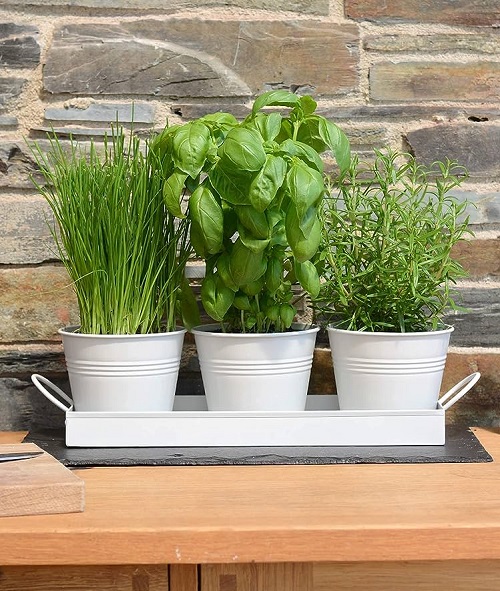
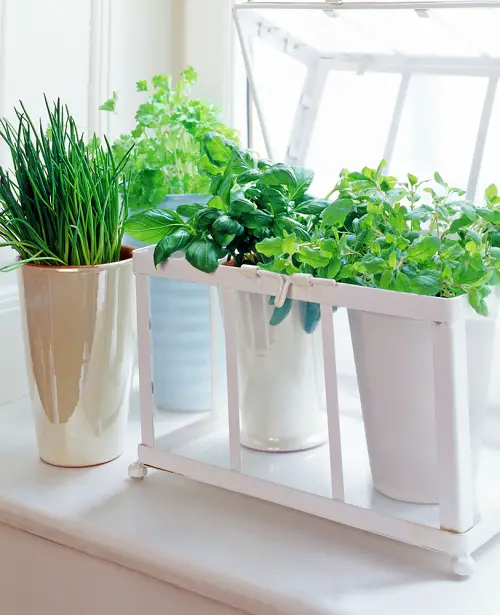
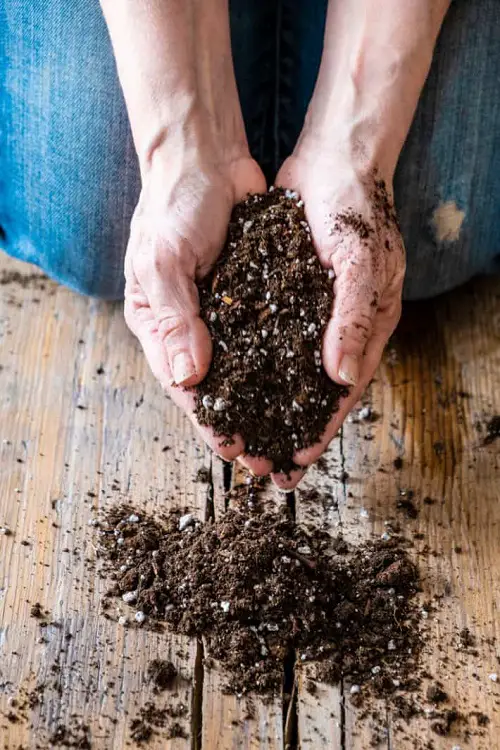

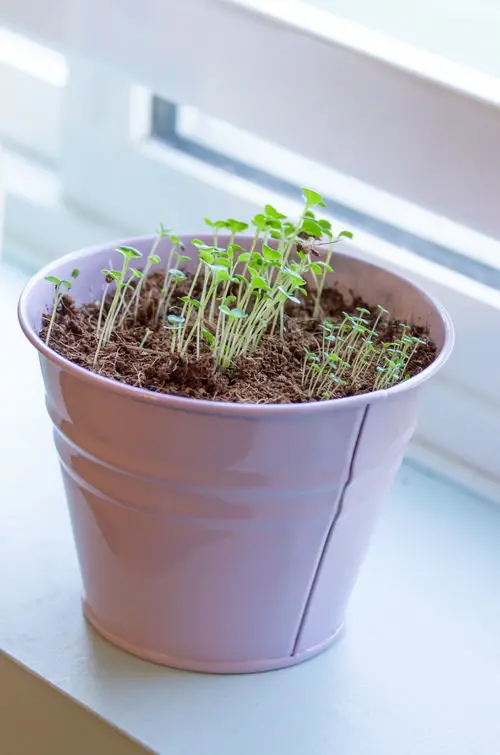
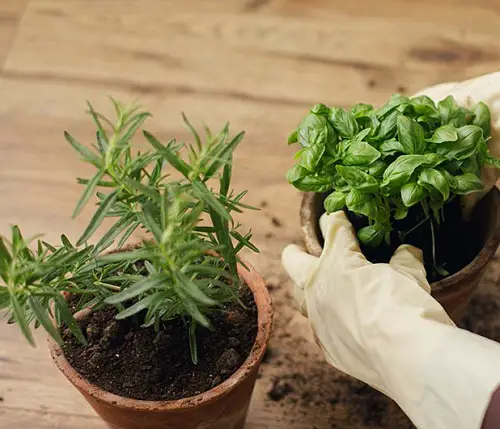


Useful information but herbs do not require chemical fertilizer rather it need organic one for their original aromatic qualities . I use to grow Indian herbs in pots for kitchen purpose and some herbs as mosquitos repellents . Any way thank you for this article . God bless you .
Very informative thankful